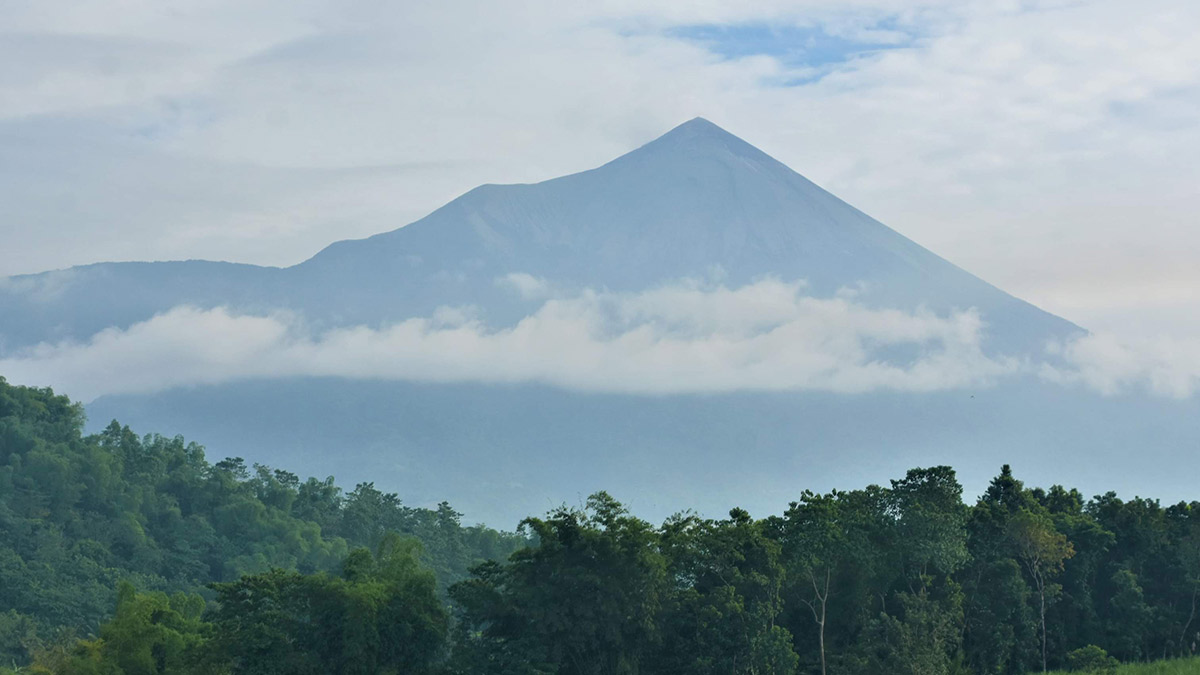Mt. Kanlaon emits record 7,307 tons of SO2; Alert Level 2 remains

RESTIVE Kanlaon Volcano looks calm in this aerial photo taken on Monday but it remains restive and still under alert level 2, the Philippine Institute of Volcanology and Seismology says in a briefing on Monday. —RICHARD MALIHAN/CONTRIBUTOR
BACOLOD CITY — Mt. Kanlaon emitted 7,307 tons of sulfur dioxide (SO2) gas from its summit crater on Tuesday, August 13, its highest since instrumental gas monitoring began.
In an advisory, the Philippine Institute of Volcanology and Seismology (Phivolcs) said the volcano has been degassing increased concentrations of volcanic SO2 this year at an average of 1,273 tons a day prior to its June 3 eruption.
But since then, its current average has been 3,102 tons and nine volcanic earthquakes a day.
“The public is reminded that Alert Level 2 (increasing unrest) prevails over Kanlaon. This means that there is current unrest driven by shallow magmatic processes with increased chances of leading to explosive eruptions or even a hazardous magmatic eruption from the summit crater,” Phivolcs said.
READ: Kanlaon Volcano erupts; Phivolcs raises Alert Level 2
Real-time ground deformation data from continuous global positioning systems and electronic tilt measurements have been recording inflation or swelling of the Kanlaon edifice since March 2022 with increased inflation of the eastern flank beginning in 2023.
The Phivolcs said increased inflation of the southeastern flank was also recorded in July 2024, indicating slow but sustained pressurization within the volcano.
“The current monitoring parameters warn of shallow magmatic processes beneath the volcano that are actively driving unrest, causing persistent and increasing concentrations of volcanic gas emission, swelling of the edifice, and persistent volcanic earthquake activity,” it said.
The public was advised to avoid entry into Mt. Kanlaon’s four-kilometer-radius Permanent Danger Zone (PDZ) to minimize risks from volcanic hazards such as pyroclastic density currents, ballistic projectiles, rockfall, and others.
“Communities living beside river systems on the southern and western slopes, especially those that have already experienced lahars and muddy streamflows, are advised to take precautionary measures when heavy rainfall over the volcano has been forecast or has begun,” Phivolcs said.